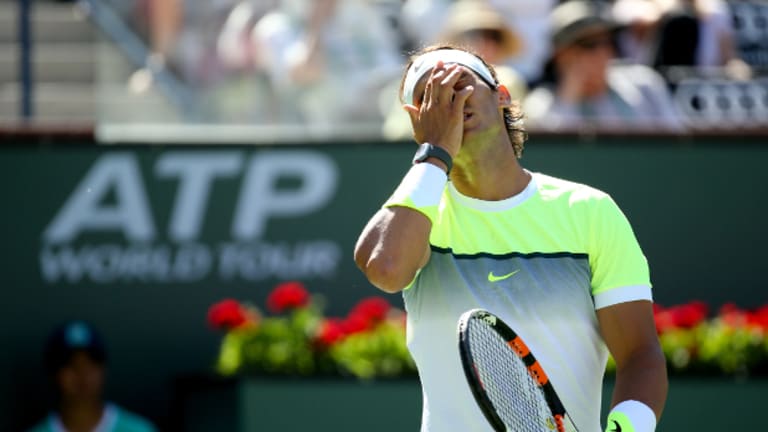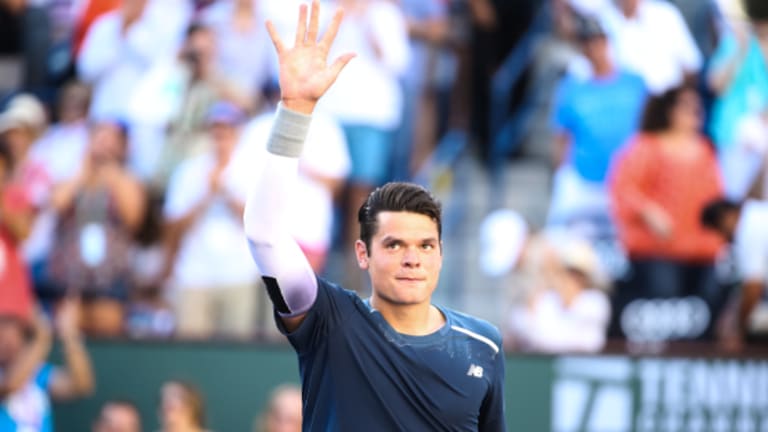INDIAN WELLS, Calif.—“I was more nervous than passive, no? Because I never had to arrive to this tiebreak. That’s my feeling, no? You know, when you arrive at that tiebreak of the third set with a serve like [my opponent's], he was really serving well, no? I know that it’s gonna be very dangerous. The second point of the tiebreak was very important.”
Rafael Nadal could easily have uttered these words after his three-hour, 4-6, 7-6 (10), 7-5 quarterfinal loss to Milos Raonic on Friday. But he actually said them at this event five years ago, after being defeated in the semifinals by the man who was squinting in Raonic’s coaching box this afternoon, Ivan Ljubicic. On that day Nadal had numerous chances to break Ljubicic’s serve in the third set, but he couldn’t quite get over the hump and lost it in a tiebreaker. Rafa kept running and hitting and creating chances; Ljuby kept snuffing them out with his serve.
The teacher taught his student well, because Raonic did exactly the same thing to Nadal today. He hit 19 aces, saved six break points and three match points, and survived a relentless series of assaults on his service games in the second set before eventually squeaking through in a breaker. There was even a sense of déjà vu in Rafa’s reference to the “second point of the tiebreak” in his quote about the Ljubicic match. I don’t remember what happened at that moment in 2010, but on the second point of the tiebreaker today, Nadal committed his only double-fault in all three sets.
In 2010, Rafa had an interesting word for his loss to Ljubicic: He called it an “accident.” In that type of match, he felt, he would normally come up with the one shot that he needed to win. He used the same word to describe his loss to Raonic, but he sounded all of the same notes, and maintained the same defiantly level-headed perspective that he had five years ago. Asked if he had been “tired” at the end of this match, Rafa said this:
“I was tired? I was not tired. I had more opportunities than him in the first, in the second, and in the third, too. That’s the real thing about what happened during the match. The real thing is I am happy the way I played. I am happy the way that I stayed in a level during the whole match. I am not happy that I lost. That’s it.”

